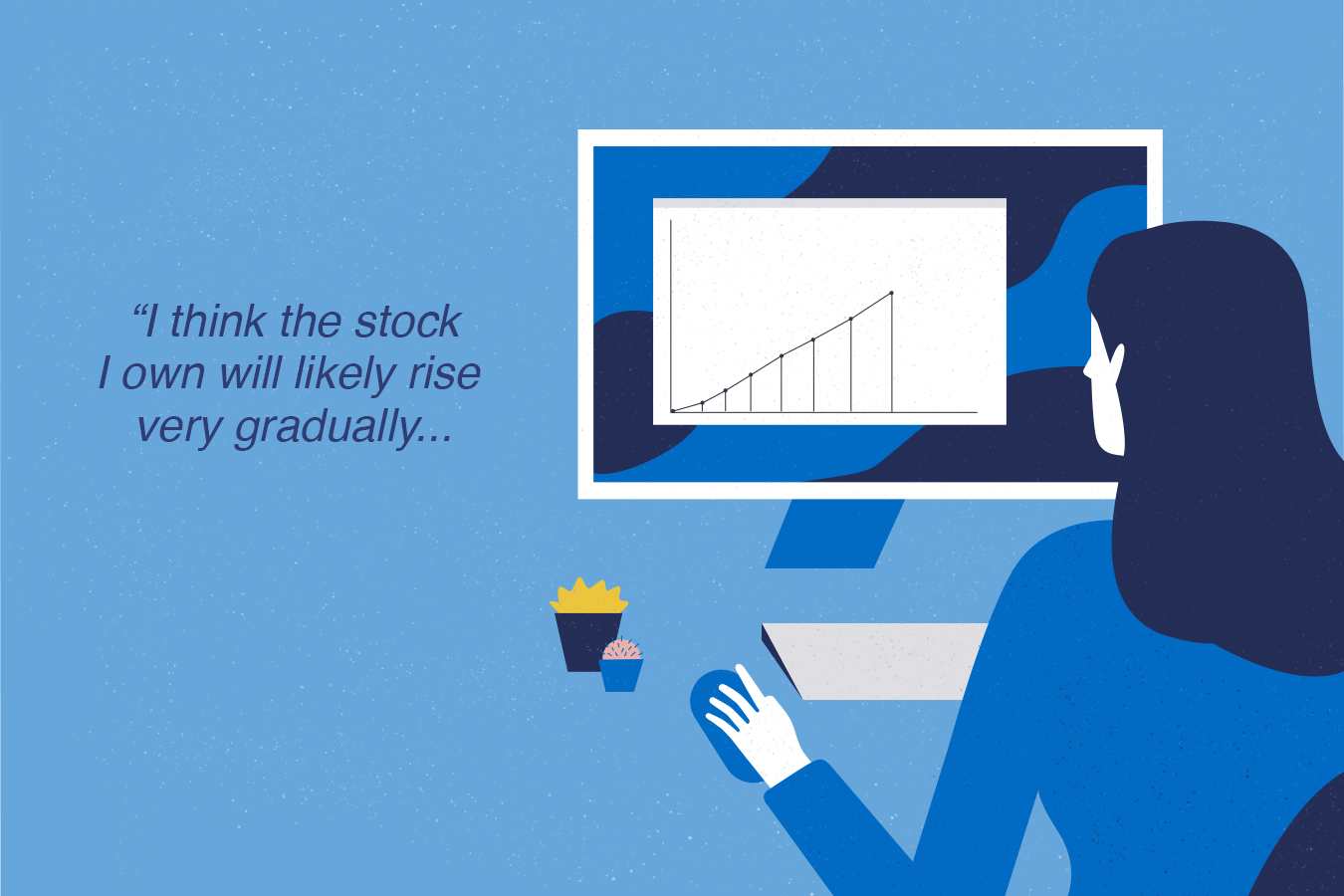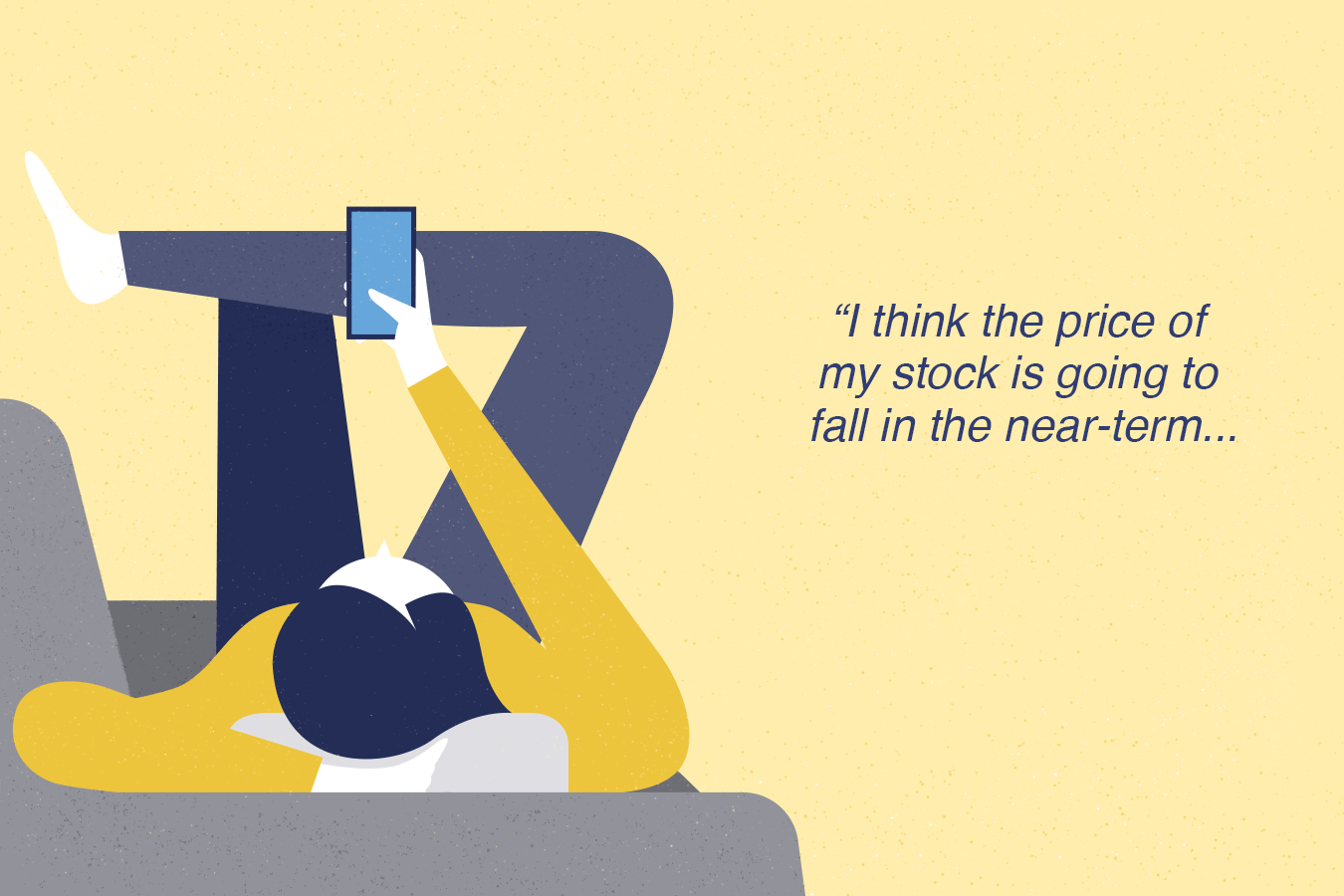Why Trade Options?
Published on May 6, 2019
minute read
Share:
In life, it's good to have options. The same goes for investing. Like equities or bonds, options are another asset to invest in. Depending on how you use them, options can generate capital gains, reduce market risk and produce income.
Many people find options a bit puzzling. First off, there's the lingo, like calls, puts, futures, forwards, swaps, and strike prices. There are even naked puts and calls. Hold up! While it's true that some options strategies can be complex, options themselves are actually relatively straightforward. The key with trading options is to start with an opinion about what's going to happen to an underlying asset. Here's what we mean and how it can play out.
What's an option? An option is simply a contract between a buyer and a seller that speculates on the future price of an asset, like a stock, for example. Since it's a contract, buyers and sellers have certain rights and obligations to the other party. As with stock investing, buyers want to pay as little as possible for the option, while sellers want to sell for as much as possible.
There are two main types of options: calls and puts. Calls give buyers the right to buy a security at a predetermined price; puts give buyers the right to sell a security at a predetermined price.
How are options different than stocks? There are some key differences, including: options come with an expiration date and an exercise price; options don't come with shareholder rights and don't pay dividends; and options generally cost only a fraction of the cost of the underlying asset.
How are options priced? Options are called "derivatives" because their price is derived from the value of the underlying asset. An option's price — the premium a buyer pays for it — is determined by factors such as the price of the underlying asset, the length of time until the option expires and the volatility of the underlying asset.
Knowing how to buy options and what strategy to choose first requires you to have an opinion on whether or not the price of that underlying asset will go up or down. There are a number of options strategies, depending on what you want to achieve and what your opinion is about the underlying asset's future price. Let's look at three common options strategies, using stocks as the underlying asset.

Let's say you think the price of a stock is going to rise. That's your first step — you've formed your opinion. To act on it, you could buy a call option. If you're right, and the price of the stock goes up, you'd have two choices. You could "exercise" your option to buy the stock at the contract's strike price, assuming it's now lower than the current market price. Or, you could sell the option contract itself for a profit because its price would have also risen because the underlying stock's price is higher.

Or, you might think the price of a stock you own is going to rise, but only very gradually. Again, that's your opinion. To try to make some money on the stock over the short term, you could sell a covered call option. If the stock price stays below the strike price, you'd get to keep both the stock and the premium you received from selling the option. This strategy can be a way to produce additional income from investments you already own. If the stock price rises, however, you'd be obligated to sell the stock to the option buyer at the strike price.

Now, maybe you believe the price of a stock you own will drop in the near future and you want to protect your investment from the potential loss. In this case, you could buy a put option on your stock, which would act as a form of insurance. When you buy a put, you lock in a minimum selling price, which is the strike price. If the stock price falls below the strike price, as you expect, the options contract would be in-the-money and you could profit from either selling the put or selling the stock at the strike price. If the stock price rises, however, you would be out the amount you spent on the put option, but hey, your stock would be up!
Since options are complex investments that may include high-risk, advanced trading strategies, it’s important to fully understand the risks associated with options before you begin trading them in your portfolio. It's equally important to closely monitor your investments and understand how much risk you're taking on at any given time. Use a Practice Account to try options trading, risk-free!
RBC Direct Investing Inc. and Royal Bank of Canada are separate corporate entities which are affiliated. RBC Direct Investing Inc. is a wholly owned subsidiary of Royal Bank of Canada and is a Member of the Investment Industry Regulatory Organization of Canada and the Canadian Investor Protection Fund. Royal Bank of Canada and certain of its issuers are related to RBC Direct Investing Inc. RBC Direct Investing Inc. does not provide investment advice or recommendations regarding the purchase or sale of any securities. Investors are responsible for their own investment decisions. RBC Direct Investing is a business name used by RBC Direct Investing Inc. ® / ™ Trademark(s) of Royal Bank of Canada. RBC and Royal Bank are registered trademarks of Royal Bank of Canada. Used under licence. © Royal Bank of Canada 2019. All rights reserved.
The views and opinions expressed in this publication are for your general interest and do not necessarily reflect the views and opinions of RBC Direct Investing. Furthermore, the products, services and securities referred to in this publication are only available in Canada and other jurisdictions where they may be legally offered for sale. If you are not currently resident of Canada, you should not access the information available on the RBC Direct Investing website.
Inspired Investor brings you personal stories, timely information and expert insights to empower your investment decisions. Visit About Us to find out more.










